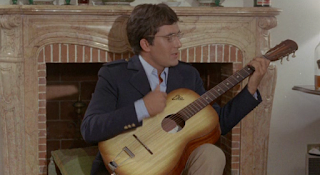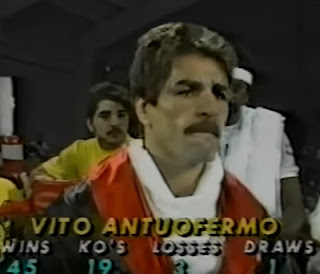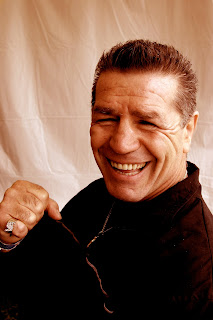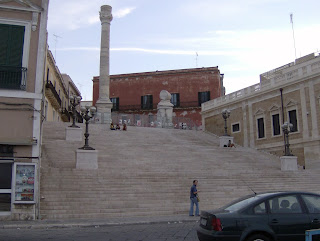Italian energy company 65 years old today
 |
| The ENI logo, with its strange six-legged dog |
The Rome-based multinational oil and gas company ENI, one of
the world’s largest industrial concerns, was founded on this day in 1953.
The company, which operates in 79 countries, is currently valued
at $52.2 billion (€47.6 billion) and employs almost 34,000 people. It is the 11th largest oil
company in the world.
Its operations include exploration for and production of oil
and natural gas, the processing, transportation and refining of crude oil, the transportation
of natural gas, the storage and distribution of petroleum products and the
production of base chemicals and plastics.
A wholly state-owned company until 1995, ENI is still to a
large extent in the control of the Italian government, which owns just over 30
per cent of the company as a golden share, which includes preferential voting rights,
almost four per cent through the state treasury, and a further 26 per cent through
the Italian investment bank, Cassa Depositi e Prestiti.
ENI came into being as Italy was rebuilding after the Second
World War, which had left its economy in ruins. Enrico Mattei, an industrialist
and a Christian Democrat deputy, was assigned the
task of winding down the existing state-owned oil company Agip (Azienda
Generale Italiana Petrolio), an entity that had come into being under the Fascist
regime and was seen as unsustainable.
 |
| Enrico Mattei, ENI's founder, was a Christian Democrat deputy |
Instead of closing Agip, however, Mattei rebuilt and
expanded it, setting up a new company, Ente Nationale Idrocarburi – the National
Hydrocarbons Authority – which would control the petrochemical industry
throughout Italy.
The famous ENI logo – a six-legged imaginary dog – came into
being at an early stage, the six legs symbolising the four wheels of a car and
the two legs of the driver.
Mattei’s tactics were controversial. Attempting to break the dominance of the
world oil market by the so-called “Seven Sisters” – the seven mainly American
companies that controlled 85 per cent of the global market from the mid-40s
onwards, he made independent deals with Algeria, Egypt and Iran and, at the
height of the Cold War, with the Soviet Union that greatly enhanced ENI’s
value.
When Mattei was killed in a plane crash in 1962, there was
strong evidence that the private jet in which he and the Time-Life journalist
William McHale were travelling from Catania in Sicily to Milan had been
sabotaged and conspiracy theories about the involvement of Italian and American
secret service agents acting in the interests of the “Seven Sisters” rumbled on
for years. After several enquiries, a court ruled in 1995 that Mattei’s cause of
death was homicide, although the perpetrators have never been identified.
Even after Mattei’s death, however, ENI’s ties with the
Middle East and Algeria were further strengthened, especially after the crisis
of 1973, when the OPEC countries imposed an embargo on US and Netherlands
companies in the wake of the Yom Kippur War.
 |
| Emma Marcegaglia, ENI's current president |
The ENI enterprises included an oil pipeline between Algeria
and Sicily, via Tunisia, and, more recently, a joint initiative with Russia to
import gas supplies into Europe.
Within Italy, ENI sells petrol and diesel under the ENI and
Agip brands, and has seven power plants run using natural gas, at Brindisi in
Apulia, Ferrara and Ravenna in Emilia-Romagna, Livorno in Tuscany and Bolgiano,
Mantua and Ferrera Erbognone in Lombardy.
These supply power to 7.45 million residential customers in
Italy and 2.09 million in other parts of Europe.
The ENI group includes companies in the construction, engineering
and drilling businesses, with much energy devoted to finding new reserves off
oil and gas, particularly off the coast of Africa and in the southern
Mediterranean.
The company is chaired by the 52-year-old businesswoman Emma
Marcegaglia, who was appointed president by Italian premier Matteo Renzi. The
CEO is Claudio Descalzi, who first worked for ENI in 1981.
The port of Brindisi, where the power plant is part of substantial
ENI involvement in the area’s industry, sits on a large natural harbour
overseen by the red-stone Aragonese Castle known as Forte a Mare that stands on
a small island at the entrance, and by the Castello Grande or Castello
Federiciano, which was once a residence of King Victor Emmanuel III. Within the medieval centre of the city, which
boasts a reconstructed Romanesque Duomo – the 11th or 12th
century original was destroyed in an earthquake in 1743, two ancient Roman
columns, which has been adopted as symbols of the city, are said to mark the
beginning of the Appian Way, which linked Brindisi with Rome.
ENI’s headquarters in Rome, the Palazzo ENI or Palazzo di
vetro (The Glass Palace) is situated in the area known as Parco Centrale del
Lago, a large green space in the middle of the EUR district, the modern city
within a city built for the Universal Exposition that was scheduled to be held
in Rome in 1942 but never took place. The Palazzo looks out over the Lago dell’EUR
– the EUR lake – a short distance from the Palazzo dello Sport, the circular
arena built by Marcello Piacentini and Pier Luigi Nervi for the 1960 Olympics. Designed
by the architects Marco Bacigalupo and Ugo Ratti, assisted by engineers Leo
Finzi and Edoardo Nova, it is 85.5m high and has 22 floors. When it was inaugurated,
it was the tallest building in the capital, after the Basilica of San Pietro in
Vaticano, but has since been eclipsed by nearby Torre Europarco (120m) and the Eurosky
Tower (155m).
More reading:
Why mystery surrounds the death of industrialist Enrico Mattei
Calisto Tanzi and the Parmalat scandal
The textile boss who built a village for his workforce
Also on this day:
1944: The birth of author and politician Raffaele Lauro













